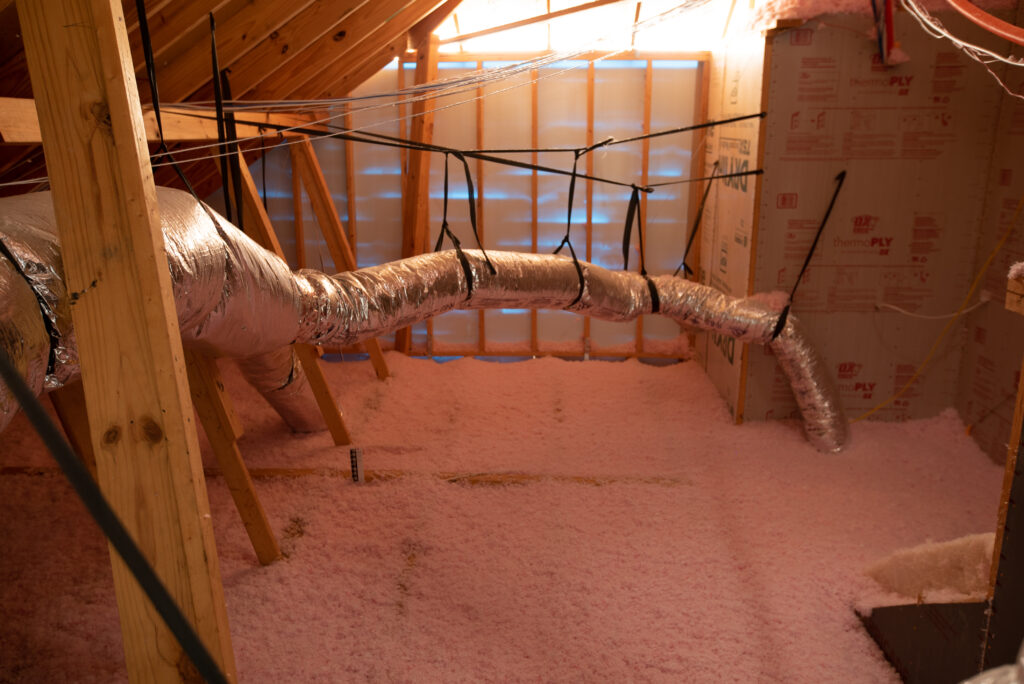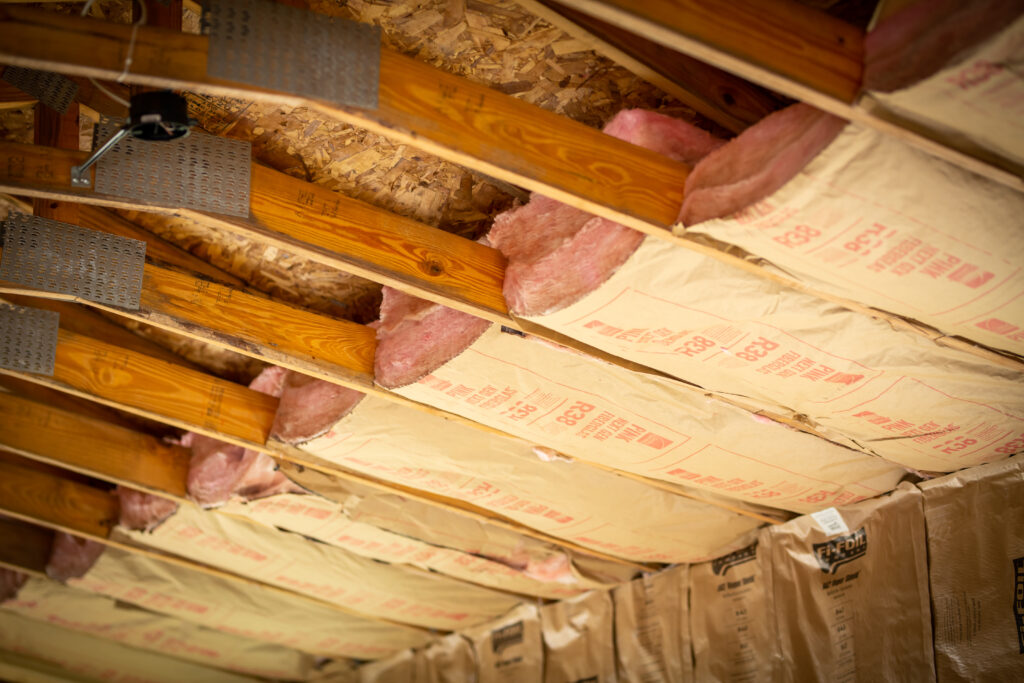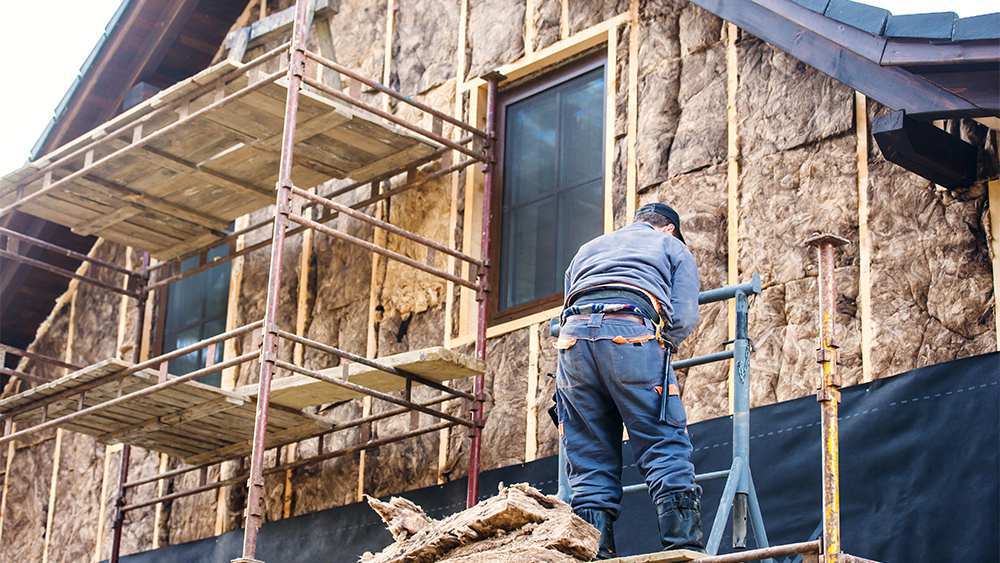🏠 Should You Add New Insulation Over Old Material?

When it comes to improving your home’s energy efficiency, adding insulation seems like an obvious solution. However, many homeowners often face the temptation to simply add new insulation over old material, assuming that it will solve their problems. While this may seem like an easy fix, the reality is that layering insulation can create a series of complications that could make the situation worse.
🤔 The Temptation of Adding Insulation Over Old Material

For many, the idea of topping off existing attic insulation with a new layer may appear to be a time-saving and cost-effective solution. After all, it’s easier than removing the old material and starting fresh. However, what many don’t realize is that adding insulation over old can lead to insulation contamination risks, which could compromise your home’s energy efficiency and indoor air quality.
If the old insulation is contaminated with dust, debris, or even moisture, you risk trapping these contaminants between the new layers. This not only creates an environment conducive to mold growth but can also affect the performance of the new insulation, leading to ineffective thermal barriers. In some cases, it can even exacerbate the initial issues that the homeowner was hoping to resolve.
⚠️ The Risks of Layering Attic Insulation
Layered attic insulation can cause a range of problems if not approached with caution. One major concern is the compression of the underlying insulation, particularly if the new layer is heavy or improperly installed. This can reduce the effectiveness of both the old and new insulation, leading to a significant loss in energy efficiency.
Furthermore, fiberglass over cellulose is a combination that should be handled with care. While both materials are effective on their own, the combination can lead to air flow issues. Fiberglass, when installed over cellulose, may not allow for adequate air circulation. This lack of airflow can contribute to moisture accumulation, which is particularly problematic in areas where humidity is a concern. Moisture can degrade the effectiveness of both types of insulation and promote the growth of mold or mildew.
🐭💧 Moisture and Rodent Risks: Why Removal Might Be the Safer Option
The real dangers of adding insulation over old come from the moisture and contamination risks that are often present in old insulation. If the previous insulation has been exposed to moisture, the new layer will only trap the damp material underneath, potentially causing long-term damage. Moisture can deteriorate the insulation and also lead to wood rot in the attic, which can damage the structural integrity of your home.
In addition to moisture, old insulation can be a haven for pests. Rodents, insects, and other critters often take shelter in attic spaces, and their droppings, nests, or body parts can become embedded in the insulation. Layering new insulation over rodent-contaminated material will only hide these contaminants, making the problem worse and potentially spreading harmful bacteria or allergens throughout your home.
🔄 When is Full Removal the Better Long-Term Solution?
Given the insulation contamination risks and other problems associated with simply layering new material, full removal of old insulation can often be the safer and more effective choice in the long run. This approach ensures that any hidden issues such as moisture buildup, rodent infestations, or damaged material—are addressed before new insulation is installed.
✅ Professional attic inspections involve thorough assessments of the existing insulation, checking for:
Signs of moisture damage
Pest infestation
Compaction or compression
Removing the old insulation allows for a clean slate, providing an opportunity to properly air seal the attic and prevent future issues. Additionally, it ensures that new insulation can be installed correctly and effectively, without any of the underlying problems that might have compromised its performance.
🛠️ How Professionals Assess the Condition of Existing Insulation

Professionals in the field of insulation installation utilize various diagnostic methods to assess the condition of existing material. They look for signs of damage such as compression or contamination that can reduce the insulation’s effectiveness.
🔍 In some cases, they may also perform:
Blower door testing to check for air leaks
Moisture detection tools
Rodent contamination assessments
Removing old insulation is often recommended when the material is damaged, wet, or contaminated. By addressing the root cause of the issue, professionals can ensure that your home is protected from future moisture problems, air leaks, and pest infestations. Additionally, proper removal allows for better air sealing, which significantly enhances the overall efficiency of the insulation system.
✅ The Benefits of Removing Old Insulation
While removing old insulation can be more time-consuming and expensive, the long-term benefits outweigh the initial cost.
🏡 Benefits include:
Maximum energy efficiency
Prevention of mold and moisture issues
Elimination of pest-related contamination
Improved indoor air quality
Ability to upgrade to more effective modern materials (e.g. spray foam, cellulose)
Removing old insulation also provides an opportunity to upgrade to better materials that might be more effective than the existing ones. For example, transitioning from fiberglass to a more advanced spray foam or cellulose insulation could improve your home’s energy efficiency and air quality.
🧩 Making the Right Choice for Your Home’s Insulation Needs

When it comes to improving your home’s energy efficiency and comfort, the key to success is ensuring that the existing attic insulation is in good condition before adding new material. While layering insulation may seem like an easy fix, it can often do more harm than good if the old insulation is compromised.
💡 Key risks include:
Moisture buildup
Rodent contamination
Compromised thermal barriers
By working with professionals to assess the condition of existing insulation and considering full removal when necessary, homeowners can avoid future complications and enjoy long-lasting comfort and savings. Proper installation, whether through fiberglass over cellulose or more advanced options, can ensure that your home remains energy-efficient, comfortable, and safe.










